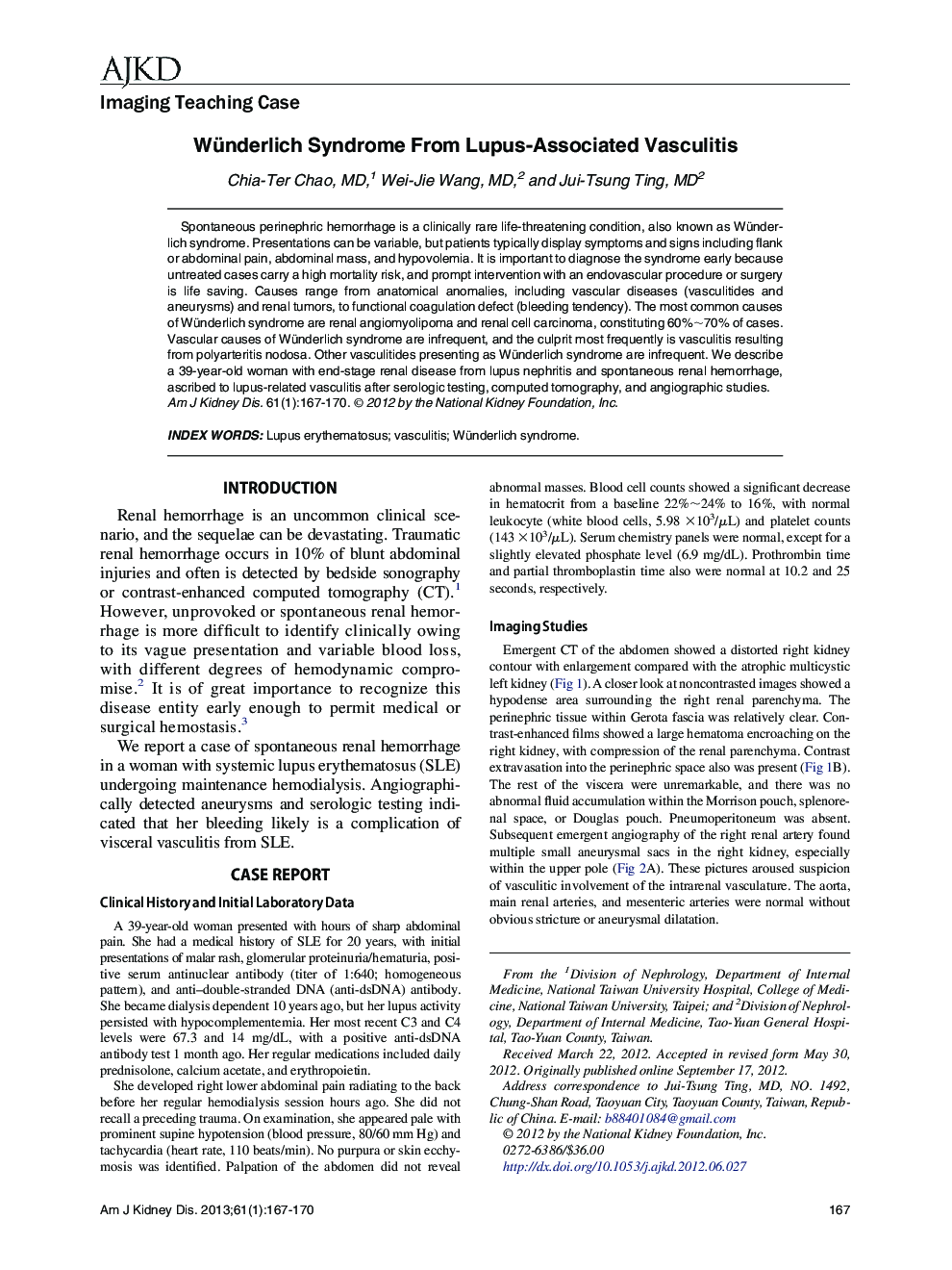| Article ID | Journal | Published Year | Pages | File Type |
|---|---|---|---|---|
| 3848595 | American Journal of Kidney Diseases | 2013 | 4 Pages |
Abstract
Spontaneous perinephric hemorrhage is a clinically rare life-threatening condition, also known as Wünderlich syndrome. Presentations can be variable, but patients typically display symptoms and signs including flank or abdominal pain, abdominal mass, and hypovolemia. It is important to diagnose the syndrome early because untreated cases carry a high mortality risk, and prompt intervention with an endovascular procedure or surgery is life saving. Causes range from anatomical anomalies, including vascular diseases (vasculitides and aneurysms) and renal tumors, to functional coagulation defect (bleeding tendency). The most common causes of Wünderlich syndrome are renal angiomyolipoma and renal cell carcinoma, constituting 60%â¼70% of cases. Vascular causes of Wünderlich syndrome are infrequent, and the culprit most frequently is vasculitis resulting from polyarteritis nodosa. Other vasculitides presenting as Wünderlich syndrome are infrequent. We describe a 39-year-old woman with end-stage renal disease from lupus nephritis and spontaneous renal hemorrhage, ascribed to lupus-related vasculitis after serologic testing, computed tomography, and angiographic studies.
Related Topics
Health Sciences
Medicine and Dentistry
Nephrology
Authors
Chia-Ter MD, Wei-Jie MD, Jui-Tsung MD,
